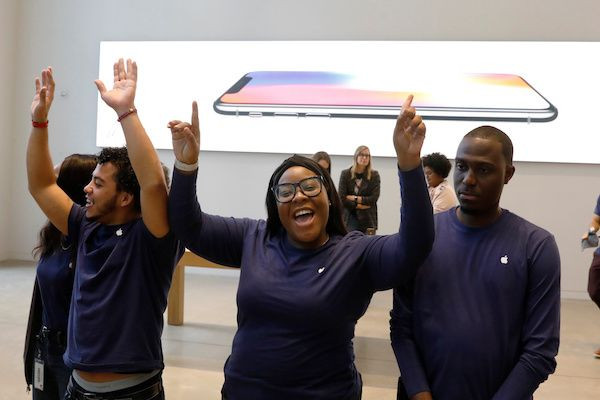iOS 11 Overtakes iOS 10 In Terms Of User Adoption

It’s been less than four weeks since Apple rolled out iOS 11 to the public, but user adoption of the new mobile OS has now reached 47 percent. This means more iPhones and iPads are already running on the latest mobile operating system than last year’s iOS 10.
This Thursday, analytics company Mixpanel published its report on the user adoption of iOS 11 after examining data collected from users. Based on the report, the recently launched software has successfully overtaken its predecessor in terms of the number of devices it is installed on. Data obtained from users revealed that iOS 11 is now installed on 47.32 percent of Apple’s iOS-running devices. On the other hand, iOS 10 is installed on 46.01 percent of devices. As for iOS 9 and older versions, they account for just 6.67 percent.
While it’s commendable that iOS 11 has already been installed on more devices than iOS 10, the latter still did better in terms of the amount of time it took to overtake its predecessor. During the same timeframe last year, it just took two weeks for iOS 10 to overpower iOS 9 in terms of user adoption. At the two-week mark for this year, iOS 11 was only installed on 38.5 percent of Apple devices.
MacRumors believes more users would be switching to iOS 11 in a heartbeat when its first major update, iOS 11.1, is released. The update is still in the works as of late, but it is already sparking interest among many users due to the features it would add to the iOS 11 operating system. After all, iOS 11.1 will not only come with new emoji characters, it would also reintroduce a 3D Touch gesture that would allow users to access the App Switcher using one hand.
There could also be a significant increase in the user adoption of iOS 11 when iPhone X arrives. 9to5Mac reports that a major factor on why there is slower adoption of iOS 11 compared to iOS 10 is the delay in the release of iPhone X. The site noted that in the past years, more customers upgrading to the latest flagship handsets automatically accounted for a significant jump in the number of consumers using the latest iOS version.
Since the release of iOS 11, Apple has went on to roll out three minor updates that came with fixes for certain bugs and issues. Just this Wednesday, the tech giant released iOS 11.0.3 that addresses the haptic feedback and unresponsive display issues discovered on some iPhone 7 and iPhone 7 Plus units after the release of iOS 11.0.2.
Introduced at the Worldwide Developers Conference last June, iOS 11 is Apple’s next-generation version of iOS. The new OS comes with subtle design changes to the user interface of Apple’s iPhones and iPads. It adds more customization options to the Control Center, and it also merges the Lock screen with the Notification Center. Other changes that iOS 11 brings include a more natural voice for Siri, a persistent Dock at the bottom of the display and a new App Switcher, among many others.
© Copyright IBTimes 2024. All rights reserved.



















